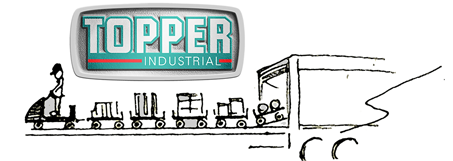- Improves safety by reducing motion, handling, and forklift movement. READ HERE.
- Improves quality by first defecting defects instead of creating a bad batch. READ HERE.
- Improves flexibility by shortening lead-times through processes (connected processes, smaller lot sizes). READ HERE.
- Improves scalability by making equipment that is efficient with smaller lot sizes. READ HERE.
- Reduces inventory by connecting processes and reducing lot sizes through quick changeover. READ HERE.
- Improves productivity by working on one thing at a time and cutting out wasted motion. READ HERE.
- Simplifies material replenishment by making the speed of material consumption steady and paced to a takt time. READ HERE.
- Frees up floor space by opening space used for inventory. READ HERE.
- Makes kaizen take root by exposing hidden problems and making them more visible. READ HERE.
- Improves morale by promoting cross-training and skill enhancement, as well as identifying and solving problems more quickly and reducing frustration. READ HERE.
Topper Industrial will use this blog to take a deep dive and look at this issue and benefits.
Productivity is the efficiency with which a manufacturer converts inputs into outputs. Since staff represent the largest cost for many firms, labor productivity has special importance and vitally affecting competitiveness.
Manufacturers with higher productivity charge lower prices or increase profit margin (or choose a combination of the two). Improved productivity must never compromise production quality.
Training can improve the knowledge and skills of staff, yet investment in equipment and new technology most often enables output per worker to increase.
Improved productivity should also be quantified by plant and machinery effectiveness. When a machine might be available and functioning normally for 80 percent of an average week, there is lost productivity even during cleaning and repair. The production manager may consider that this figure could be improved through better and more regular servicing.
Measuring the productivity of capital is frequently calculated by the return on capital employed. Maximizing uptime and throughput to protect profit margins start with a clear VSM (Value Stream Map). Identifying current process inefficiencies create a great starting point. Industrial carts in the Fork Truck Free environment along with one piece flow produce intuitive handling impacts, while considering the ergonomic setup options minimizing operator fatigue to speed up production. Measuring results can be integrated into best-practices triggering a process step to improve throughput.
Batching is not always bad
There are situations where batch manufacturing is more cost-effective because of limitations resulting from tooling, equipment, technology, or process design. Although producing work in batches under these circumstances may be the most logical and cost-effective choice today, it should never be considered acceptable into the future. Batching must be considered a countermeasure until the process can be improved one piece flow (or smaller batches) occurs.
It is important to understand the effect that batching has on process flow, operating costs, and overall competitiveness and productivity of the manufacturer. It requires a deep understanding of the process and the needs of the customer.
The waste in Batch Process prove it is not lean
Eliminating waste is the heart and soul of lean manufacturing. One piece flow avoids the frequent sources of waste resulting from batching processing. It makes no sense to increase the time between spending money in a process and receiving money from customers due to an increased overall cycle time. It makes no sense to create inventory that is not yet sold.
Direct waste can be quantified in waiting and downtime in one or more steps of the process while previous steps complete work on multiple units and larger amounts of inventory between process steps.
Batching guarantees that one step will shut down while waiting for a previous step to complete a batch, and increased rework and delays will occur when a defect is discovered. Importantly, one piece flow will immediately highlight any problems with vendors, often the source of productivity hemorrhaging.
Topper Industrial (www.topperindustrial.com) is a leading manufacturer of material handling equipment. Topper provides lean material handling solutions to the supply chain.
Topper Industrial is able to engineer and design Industrial Carts (Mother / Daughter Cart Systems, Quad Steer Carts or Tracking Carts, Specialized Delivery Carts, Transfer Carts with Roller Deck, Static Carts, Rotation Carts, Tilt Carts or Kitting Carts), Industrial Cart Components (Parts Department), Industrial Containers (Corrugated and Wire Mesh Containers), Pallets, Lift/Tilt Systems, and Racking. Topper Industrial designs all products with ergonomics in mind, focusing on ease of use and best positioning of material to get the job done

